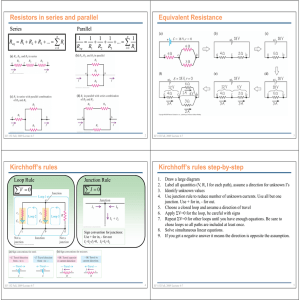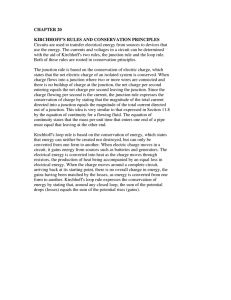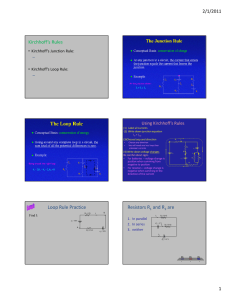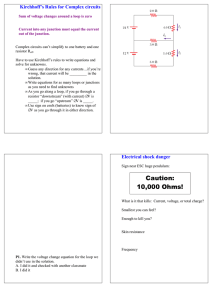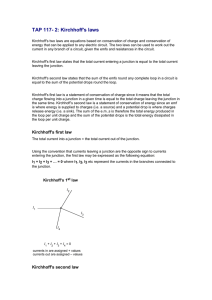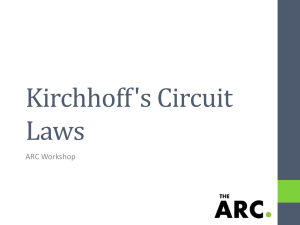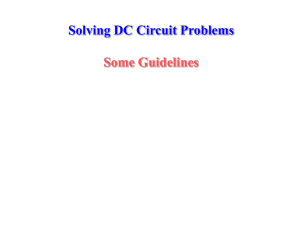Kirchhoff`s junction rule states that at any circuit junction
advertisement
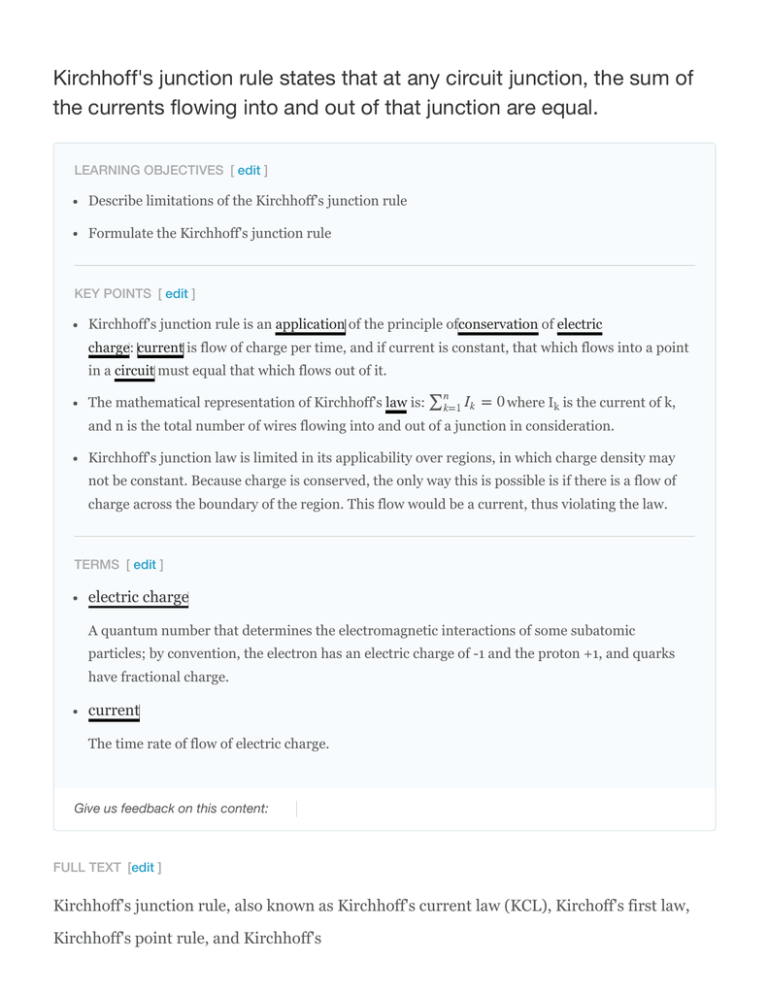
Kirchhoff's junction rule states that at any circuit junction, the sum of the currents flowing into and out of that junction are equal. LEARNING OBJECTIVES [ edit ] Describe limitations of the Kirchhoff's junction rule Formulate the Kirchhoff's junction rule KEY POINTS [ edit ] Kirchhoff's junction rule is an application of the principle ofconservation of electric charge: current is flow of charge per time, and if current is constant, that which flows into a point in a circuit must equal that which flows out of it. The mathematical representation of Kirchhoff's law is: ∑ n k=1 Ik = 0 where Ik is the current of k, and n is the total number of wires flowing into and out of a junction in consideration. Kirchhoff's junction law is limited in its applicability over regions, in which charge density may not be constant. Because charge is conserved, the only way this is possible is if there is a flow of charge across the boundary of the region. This flow would be a current, thus violating the law. TERMS [ edit ] electric charge A quantum number that determines the electromagnetic interactions of some subatomic particles; by convention, the electron has an electric charge of -1 and the proton +1, and quarks have fractional charge. current The time rate of flow of electric charge. Give us feedback on this content: FULL TEXT [edit ] Kirchhoff's junction rule, also known as Kirchhoff's current law (KCL), Kirchoff's first law, Kirchhoff's point rule, and Kirchhoff's nodal rule, is an application of the principle of conservation of electric charge. Kirchhoff's junction rule states that at any junction (node) in anelectrical circuit, the sum of the currents flowing into that junction is equal to the sum of the currents flowing out of that junction. In other words, given that a current will be positive Register for FREE to stop seeing ads or negative depending on whether it is flowing towards or away from a junction, the algebraic sum of currents in a network ofconductors meeting at a point is equal to zero. A visual representation can be seen in . i1 i2 R1 i4 vg i3 Kirchhoff's Junction Law Kirchhoff's Junction Law illustrated as currents flowing into and out of a junction. Kirchhoff's Loop and Junction Rules Theory We justify Kirchhoff's Rules from diarrhea and conservation of energy. Some people call 'em laws, but not me! Thus, Kirchoff's junction rule can be stated mathematically as a sum of currents (I): ∑ n k=1 Ik = 0 where n is the total number of branches carrying current towards or away from the node. This law is founded on the conservation of charge (measured in coulombs), which is the product of current (amperes) and time (seconds). Limitation Kirchhoff's junction law is limited in its applicability. It holds for all cases in which total electric charge (Q) is constant in the region in consideration. Practically, this is always true so long as the law is applied for a specific point. Over a region, however, charge density may not be constant. Because charge is conserved, the only way this is possible is if there is a flow of charge across the boundary of the region. This flow would be a current, thus violating Kirchhoff's junction law.
